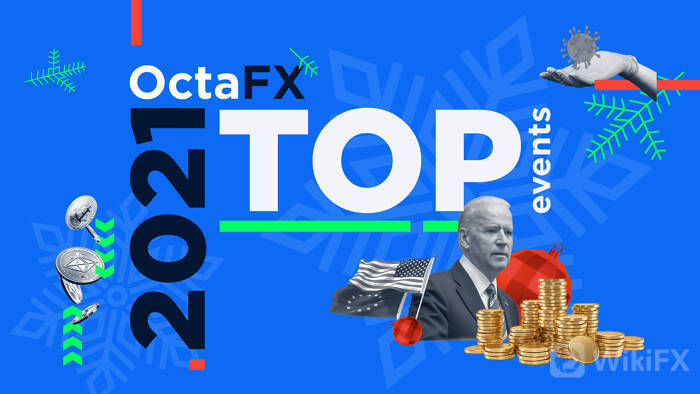
With the help of its analytics team, the international Forex broker OctaFX compiled a basic rundown to deliver some of the more critical, vital events which it deemed especially important.
The year 2021 was packed with exciting developments and meaningful circumstances in world affairs—its economy, politics, and policies—impacting the financial sector as a whole. With the help of its analytics team, the international Forex broker OctaFX compiled a basic rundown to deliver some of the more critical, vital events which it deemed especially important.
The U.S. dollars tumultuous journey through quantitative easing (QE)
During the COVID-19 crisis, the U.S. Federal Reserve (Fed) and the European Central Bank (ECB)—the central banks that issue the worlds reserve currencies—flooded the financial markets with new money. The official reason stated was helping the suffering economy because of the pandemic.
Therefore, U.S. president Joe Biden‘s proposal of a 1.9 trillion USD stimulus package to Congress arrived on 21 January. The Republican Party was highly sceptical about this approach—some congressmen even recalled the already worrying, continual growth of the national debt (a mass total of 21.6 trillion USD at the time). It is a long-term development whose lack of resolution as of yet does not shake the market’s firm belief in the reliability of the U.S. dollar.
Biden follows suit by signing stimulus plan
Fast forward two months, the U.S. Senate (6 March) and the U.S. House of Representatives (10 March) both approved the stimulus plan before Biden signed it on 11 March as a 1.9 trillion USD economic rescue package. Far from being a bipartisan undertaking, no Republican approved the new order. Although, the document was amended, for example, the clause on raising the minimum wage was removed. New money flooding the market like this filled most market participants with a bullish sentiment.
Another 1.2 trillion USD for ‘infrastructure spending plan’
Towards the end of June 2021, expectations for a tight monetary policy were running high but then the U.S. Senate agreed on and approved a new ‘infrastructure spending plan’, totalling another 1.2 trillion USD. The reason was a sharp increase in inflation in the months prior to June.
Both institutions—the Fed and the ECB—have kept rates at zero or negative and implemented quantitative easing (QE) throughout 2021, increasing their balance sheets and buying bonds with that money. Because of this, their yields fell, which encouraged investors to put capital into companies stocks and look for other projects.

Leave a Reply